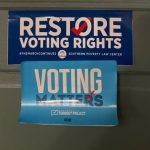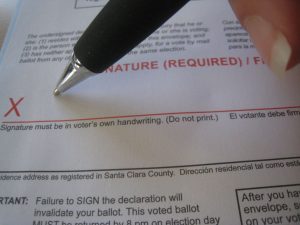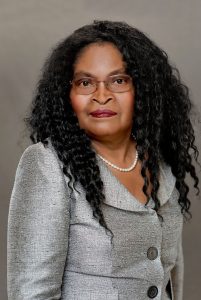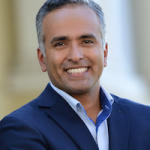by Leslie Layton
If you’re eligible to vote in the Nov. 3 General Election, Butte County Clerk-Recorder Candace Grubbs has a single, simple piece of advice: Don’t procrastinate.

To make sure your vote gets counted on election night, register or update your registration now. Vote when you receive your ballot in October. Call the Elections Office with questions, whether you speak English, Spanish or Hmong, Grubbs says.
But in what some people are calling a “vote-because-your-life-depends-on-it” election, there is plenty to worry about in terms of national polling. In some states, millions of people who have voted previously must re-register — and may not know that — because of tough and suppressive voter registration laws.
Voter demographics — including non-white turnout — will play a key role in outcomes. Some election experts worry that the perception of fraud will deter voters, when in fact the risk of voter suppression is much greater. (President Donald Trump has attacked the integrity of mail-in voting and says he’ll only lose if the vote is “rigged.”)
“We have very polarized, partisan perceptions of fraud, and that in itself is a problem,” said Nathaniel Persily, who heads up Stanford University’s Healthy Elections Project, during a media briefing with ethnic outlets last week.
Persily said there is little documented proof of vote-by-mail fraud. “The perception is greater than the reality,” he observed.

“What became clear in March was that the pandemic was going to have severe impacts on this election,” Persily said. “Everyone is going to be voting differently. We have never attempted such a massive shift in the basic way we vote in just a four-month period.”
“Vote early. It’s going to be an election unlike any other.” — Persily
Local officials across the country have sought ways for people to vote to minimize any possible exposure to COVID-19. In some cities, voters will cast their ballots from sporting arenas where they can socially distance; in others, Americans will vote from their cars at drive-up locations; in many states voters will cast ballots by mail for the first time. (See “Vote early tips” for voting from Butte County.)
Some voters will overlook the fact that they must sign the outside of the mail-in envelope so that election officials can verify the signature is authentic. Absentee voting has been a tool used mostly by affluent white people, so ballots cast by people of color are more likely to have errors. In research on elections in North Carolina and Florida, Persily said the rate of error was double for Latinos compared to whites.
“If you’re new to voting or a voter who hasn’t voted by mail before, you might be surprised to learn you actually have to sign the outside [of the envelope],” Persily said. “We need massive education and outreach so that people understand that voting is going to be different this time. I’m concerned that communities of color, including Latino communities, are going to be caught in the crossfire.”
At the Hmong Cultural Center of Butte County, Director Seng Yang said staff is prepared to translate or explain how to fill out a ballot. The center will also provide a drop-off box for completed ballots in collaboration with the Elections Office.

“We can provide assistance with the language barrier and let people make their own decisions [on how to vote],” said Yang, who often discusses the importance of civic participation on a weekly radio show for the Hmong community. Yang said more education on the importance of voting is needed, that elders in his community are unused to having a “choice to vote.”
Hmong and Hispanic/Latino residents comprise Butte County’s two largest minority groups.

Grubbs points out that Butte County has years of experience with absentee voting and recent experience with mail-in. Only 58 percent of registered voters participated in Butte County’s March 3 primary, but Grubbs says the mail-in system produced the highest turnout in the county’s history of primaries.
There was in fact, Grubbs said, quite a number of ballots mailed in by people who didn’t sign the outside of their envelopes, but most were contacted and given a chance to rectify the problem. “There were very few we could not count,” Grubbs said.
Other states, with restrictive voter registration laws, however, have managed to purge their rolls of millions of people by de-registering them without their knowledge. Almost 17 million of those voters are people of color, said Andrea Miller, who founded the nonprofit Reclaim the Vote.

Some states remove voters from the rolls after they fail to cast ballots in a designated number of federal elections; others require that voters renew their registration every two years. Miller believes there has been a deliberate effort to disenfranchise certain demographics.
“In some states, it is most definitely planned,” she said. “People believe when they register to vote that they are registered forever.”
Voter suppression was one of the factors that led to a substantial drop in the number of African Americans who participated in the 2016 election, a longtime Republican strategist told the news show Democracy Now recently.
If non-white voter turnout was comparable to what it was prior to the 2016 election, there would be “no path to victory” for the president and a party that is now positioning itself as far right, said Stuart Stevens, senior adviser to the Lincoln Project.
“If I was going to focus on one thing, I’d focus on the percentage of total turnout that will be non-white,” Stevens said. “If we knew that number today, we’d know who’s going to win this race.”
In the 2016 election, most white men and almost half of white women voters (47 percent) voted for Trump. Most Blacks and Latinos voted for his opponent, Hillary Clinton. The demographic that voted most overwhelmingly for Clinton was that of Black women – by 98 percent.
Stevens said the Republican Party has lost much of the support it once had from Asian Americans.
Karthick Ramakrishnan, director of AAPI (Asian Americans & Pacific Islanders) Data at UC Riverside, said “mountains of research” show that personal contact in outreach makes a big difference in persuading Asian Americans to register and vote.

Asian Americans are less likely to live in battleground states, Ramakrishnan said, and so less likely “to be reached out to.”
“But there are important Congressional elections,” he said. “We should really be seeing more outreach than we’ve seen before.”
Grubbs said Voter Assistance Centers will be set up throughout the county as of Oct. 31; some will provide translating help in Spanish and Hmong. Her office has 17 days after the election to count ballots that are postmarked by Nov. 3. But Grubbs said it’s best to get ballots in earlier and drop boxes will be available at libraries and city halls. She believes her office will be able to show the outcomes of local races that night — unless they’re close.
Persily agrees, noting that, nationwide, it could take days to count tens of millions of mail-in votes; and in a close election there will be legal challenges.
“Vote early,” he said. “It’s going to be an election unlike any other.”
